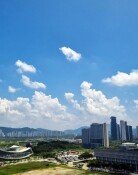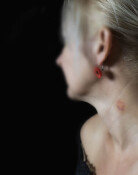Silent Resistance: Erasing Japans Flag
Silent Resistance: Erasing Japans Flag
Posted December. 26, 2005 03:12,
A research team from the Dong-A Ilbo Company History Compilation Committee recently discovered a collection of memoirs written by exemplary journalists under Japanese colonial rule and in the period immediately following liberation.
The Newspaper Journalists Notebook, published by the Modern Publishing Co. in 1948, was found in the National Assembly Library.
In his six-page memoirs contained in this Newspaper Journalists Notebook, Lee Kil-yong wrote, The erasure of the Japanese flag from the pages of Dong-A Ilbo was an everyday occurrence. It happened numerous times.
Hurrah for Sohn Kee-jeong-
On August 9, 1936, Dong-A Ilbo journalists, who learned of Sohn Kee-jeongs marathon victory at the Berlin Olympics printed, an extra edition of the newspaper and spread the news on the street using megaphones. It is said that at that time, the mass of people that gathered in front of the Dong-A Ilbo building located near the Gwanghwamun cheered for Sohn Kee-jeong, which reminded one of the cheers for independence which rang out on the streets during the March 1 Independence Movement in 1919.
It was early in the morning, but people still gathered in front of the company building, and all we could hear was shouts of joy and cheering. The masses shouted out at the top of their lungs: Hurrah for Sohn Kee-jeong. That sound bore a close resemblance to the hurrahs for independence that thundered on the streets in 1919.
On August 25, 1936, 16 days after that cheerful news was broken, Lee Kil-yong (aged 37 at that time), a Dong-A Ilbo journalist who was in charge of athletics, Lee Sang-beom, a painter, photographers, and editors worked together to erase the Japanese flag on the chest of the uniform of Sohn Kee-jeong from the photograph of Sohn standing atop the honor platform for the Olympic medal ceremony.
Beaten and Tortured-
The morning after the picture was published in the newspaper, about 10 journalists of Dong-A Ilbo were hauled off to the Jongno Police Station. The six detention rooms at the police station were packed with about 10 co-workers from Dong-A Ilbo. The detention rooms were suddenly filled with scenes of beating and torture, Lee recalled.
He recalled the sadness and resentment that he felt when Dong-A Ilbo was forced to halt publication. Dong-A Ilbo, a big newspaper company, was forced to shut down. The rotary press machine, which printed day and night newspapers so thunderously and energetically even under the close eye of secret agents working for Japan, came to a stop.
Erasing the Japanese Flag from Dong-A Ilbo Was Common-
Lee wrote that during Japanese colonial rule, erasing the Japanese flag from the pages of Dong-A Ilbo was an everyday occurrence.
He also wrote down specifically under which circumstances the Japanese flag was erased.
Whenever a building or a construction project was completed, the Japanese flag was hoisted in celebration. And in every picture of a township office, county office, and residence office, a Japanese flag flew. We erased the Japanese flag from those pictures many times, even before erasing it from Sohns uniform, said Lee. Given this, how could we stand publishing a picture that clearly showed the rising sun emblem on Sohns uniform?
Lee wrote, We were disturbed at seeing the rising sun emblem on Sohns uniform, because we felt like it deprived us of seeing Sohn Kee-jeong as a son of Korea. The picture of Sohn, who posed for the shot holding his victors laurels, was the first photo of Sohn in person. So we did not want to omit the picture. Thats why we published the picture after erasing the Japanese flag.
Erased-Flag Memories-
Lee said in his memoirs written in November 1947 that although the erasure of the Japanese flag from Sohns uniform was reported in an English article written by U.S. combat correspondents stationed in Korea, As far as I know, this is the first memoir that describes the details of the erasure.
Lee was captured by North Korea during the Korean War in 1950, and his book was forgotten. His memoir was not mentioned in the company history of Dong-A Ilbo, and was not contained in the article Journalist Lee Kil-yong, the man who erased the Japanese flag, published in 1993 by the Korea Sports Journalists Union.
The third son of Lee Kil-yong, 64-year-old Lee Tae-young, former sports editor at the Joongang Daily, said, The story of the erasure of the Japanese flag has only been told via the recollections of other journalists, including Lee Sang-beom, the painter. I am very surprised and deeply moved by the discovery of this memoir written by my deceased father.
Chung Jin-seok, a media historian and honorary professor at the Hankuk University of Foreign Studies, said, Some have dismissed the erasure of the Japanese flag as Lee Kil-yongs personal decision, and unrelated to the editorial policy of Dong-A Ilbo. However, this memoir clearly shows that Lees heroic deed was a result of tradition of anti-Japanese sentiment and tradition within the paper.
At 6:30 p.m. December 26, the 17th Lee Kil-yong Sports Journalism Awards in honor of Lee will be given out at the Korea Press Center in Taepyeong-no, Jung-gu, Seoul.
Seung-Hoon Cheon raphy@donga.com







